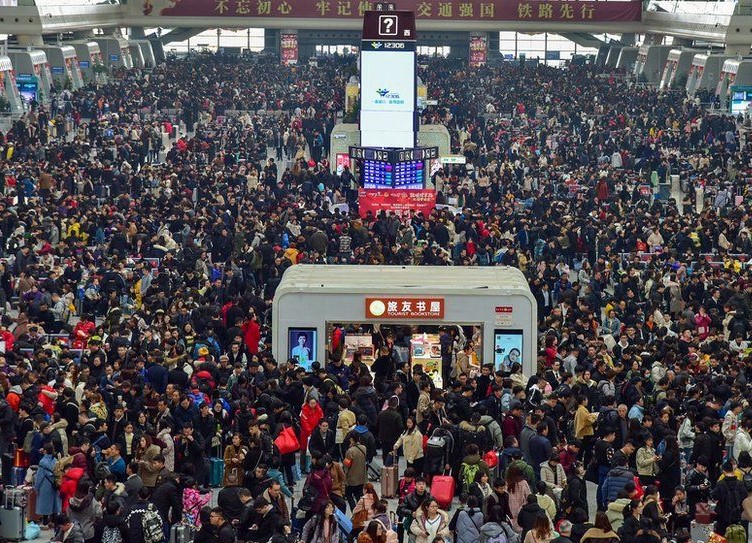(ATF) The Chinese authorities’ instruction for celebrating the Lunar New Year “on the spot” will provide a boost to the economy by reducing the disruption in manufacturing and construction activities, which normally stretches for weeks, say analysts.
In a broadcast on CCTV News, the General Office of the Central Committee of the Communist Party of China and the General Office of the State Council recently issued a notice requesting citizens to behave “in a reasonable and orderly manner” to celebrate the New Year “on the spot.”
The new government guidelines for the Lunar New Year holiday are a response to China’s worst coronavirus outbreak since the first wave. While Beijing has requested citizens to avoid travel unless necessary, those in medium-risk areas require permission to travel, and those in high-risk areas have been advised not to travel at all.
Those instructions, which basically disallow citizens to move around, mean that an estimated 277 million migrant workers will need to stay put at their place of work. For many such workers the holiday is the only chance to go home or seek a change of job.
“These measures will be a further shock to the travel sector and to tourism (tourist sites have been told to restrict visitor numbers). But with workers forced to stay close to workplaces, the economic drag could be more than offset by firms in manufacturing and construction being able to stay open longer,” Mark Williams, Chief Asia Economist of Capital Economics, said.
Boost to manufacturing and construction
The public holiday starts from Thursday, 11 February, which is the Lunar New Year’s Eve this year, and is scheduled to last for about a week. However, the economic impact of any New Year holiday normally extends well beyond the week of the national holiday.
Operations start winding down two to three weeks earlier, which is normally around now. But migrant workers typically return to work two weeks after the New Year day and often use the chance to change jobs. Consequently, it can take up to a month after New Year’s day for businesses to return to a full complement of workers.
The total disruption hence, normally lasts for around seven weeks that significantly impacts output in manufacturing and construction sectors, where productivity trickles down to a little over an eighth of the trailing four-quarter average, according to a Capital Economics analysis.
“This year though, the disruption both before and after the holiday should be much reduced. Many firms have said they intend to take advantage since the orders are strict. The official measure of industrial capacity utilisation is at an eight-year high. New orders on the Markit manufacturing PMI are at a level that, pre-COVID, was last seen in 2011. Container prices out of China are high and still rising. Some firms are offering higher pay to encourage workers to stay on,” Williams said.
The Chinese government has also estimated that travel during the festive period will be 40% lower than normal, but Capital Economics expects that to be even lower because long-distance road trips started falling even before the announcement of the latest restriction, and have already plunged far below normal.
Lock to boost consumption
According to TF Securities however, the travel restrictions could boost consumption in the economy, and if Covid is controlled effectively the impact of the truncated lockdown could be overall positive for the whole economy too.
TF Securities expects the industrial manufacturing and construction sectors to benefit the most from the travel restrictions – with 5% growth in industrial manufacturing and 5-10% growth in construction.
“Judging by past data, industrial manufacturing is at low levels during the week before the Lunar New Year as well as the two weeks after the holiday. Normally, the GDP, industrial output, and consumption indicators all record seasonal decreases in the first quarter,” Sun Binbin and Chen Baolin, analysts from TF Securities, said.
There will be little impact to the agricultural industry however, because the first quarter has normally been a slack season, they said. There will also be little impact on the financial and information technology sectors.
Based on a lower-than-normal GDP figure of 20.65 trillion yuan ($3.2 trillion) from the first quarter of last year, TF Securities expects China’s GDP for Q1 2021 to grow 22% year-on-year.
A new Covid-19 outbreak surfaced in the first week of the new year, but appears to have been brought under control. The rolling 7-day average of new infections has declined to below 100 cases, and the geographical spread also seems to have been checked, according to data released by public health agencies aggregated by Tencent News.
READ MORE:
Chinese told not to move during Lunar New Year over Covid fears






















